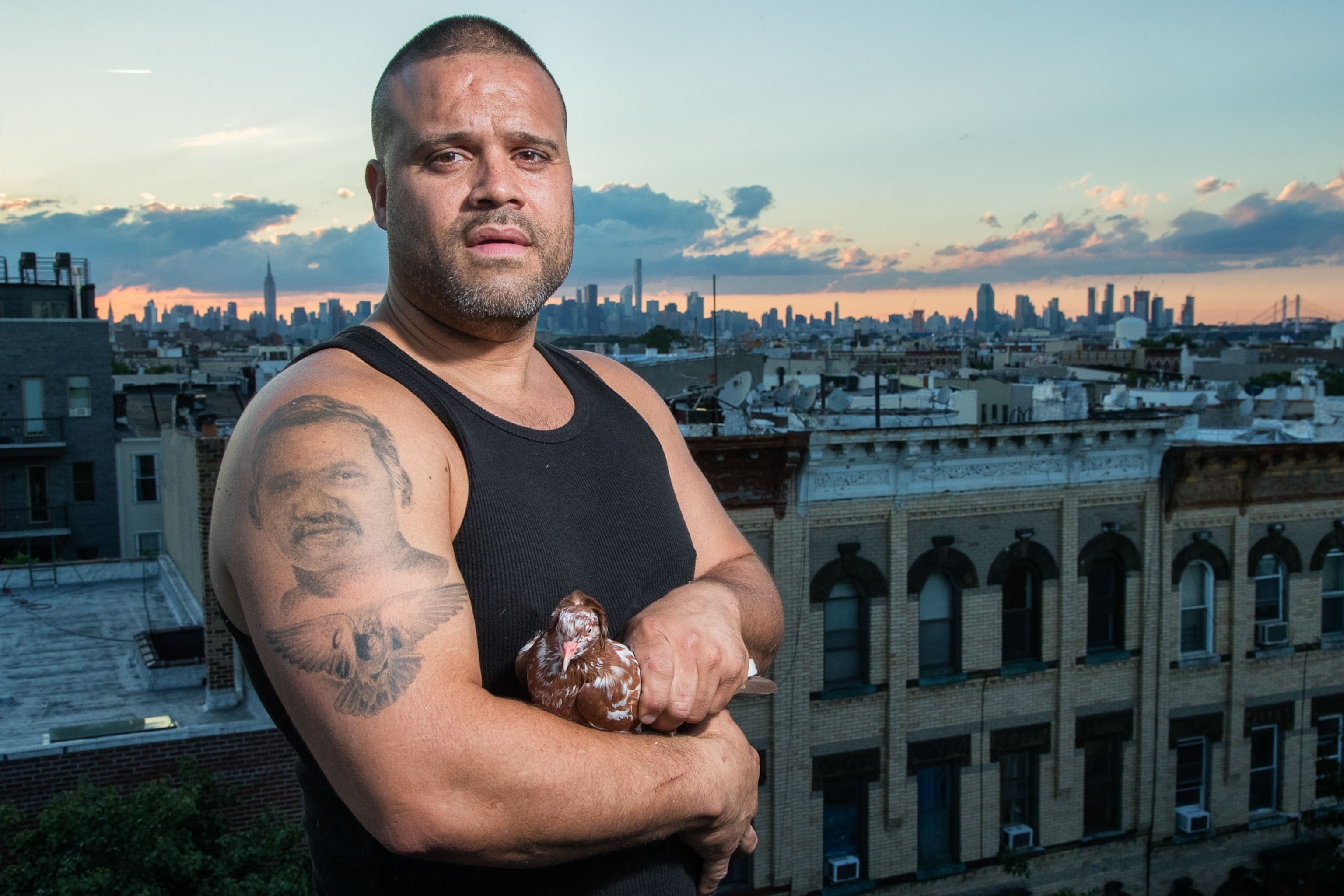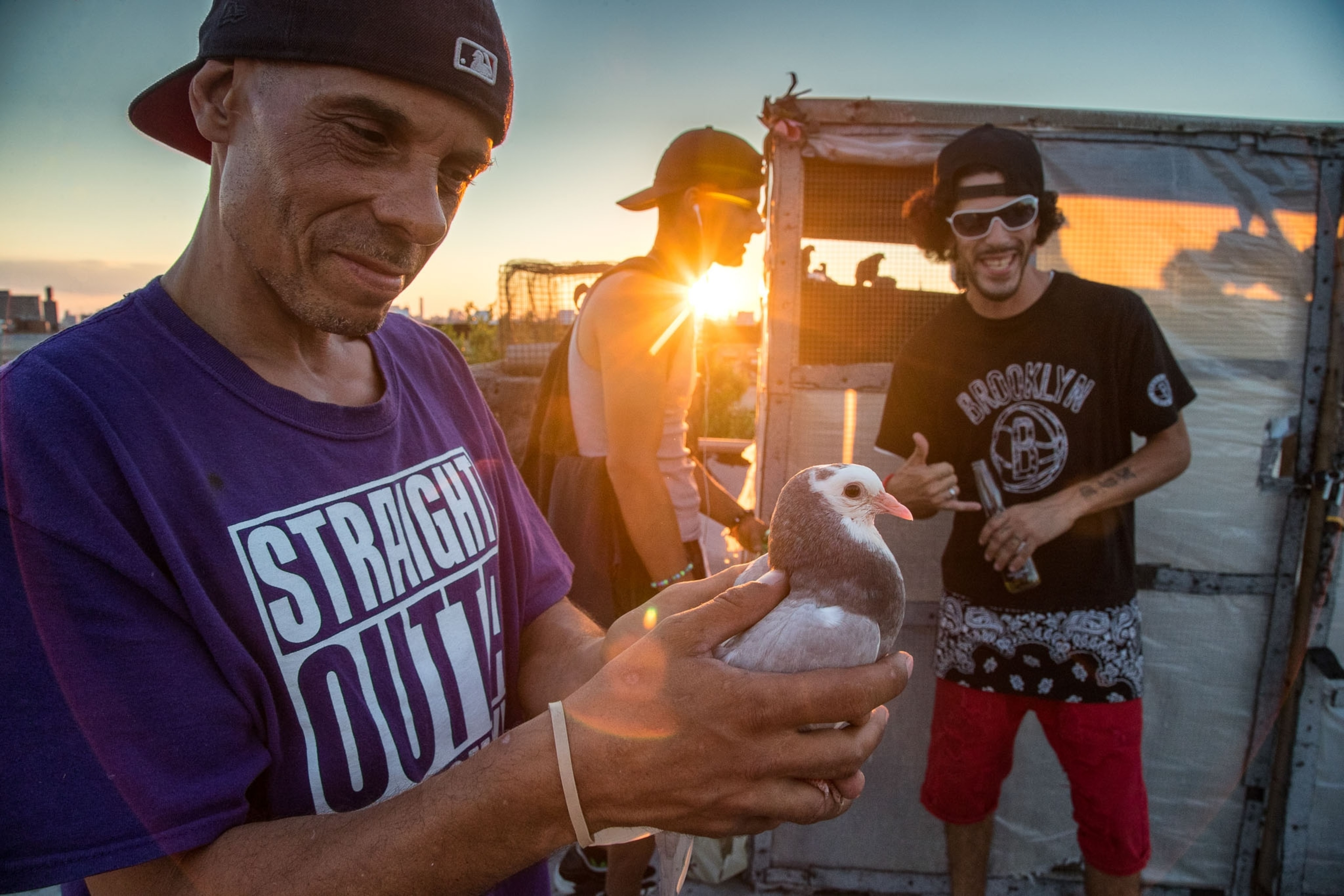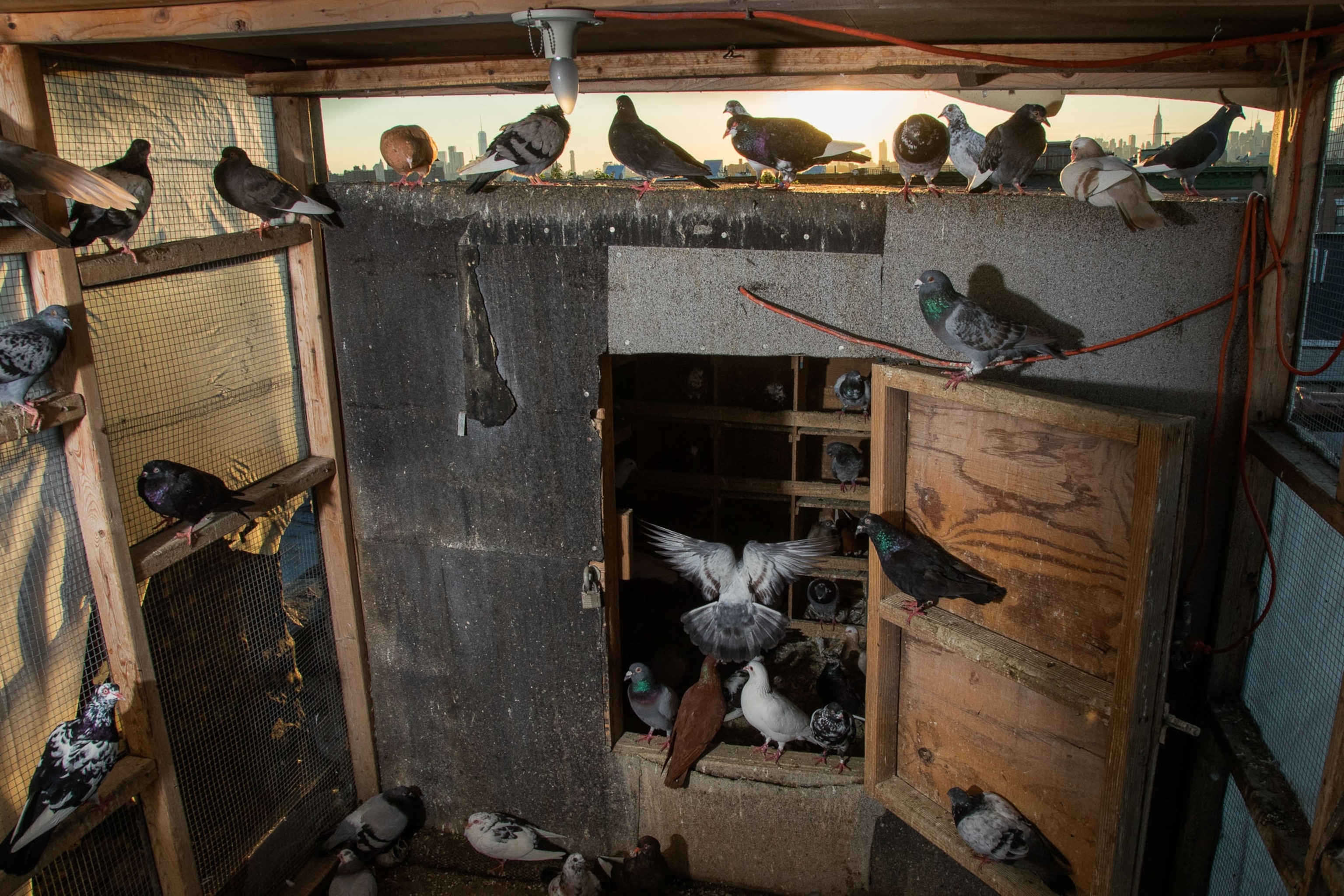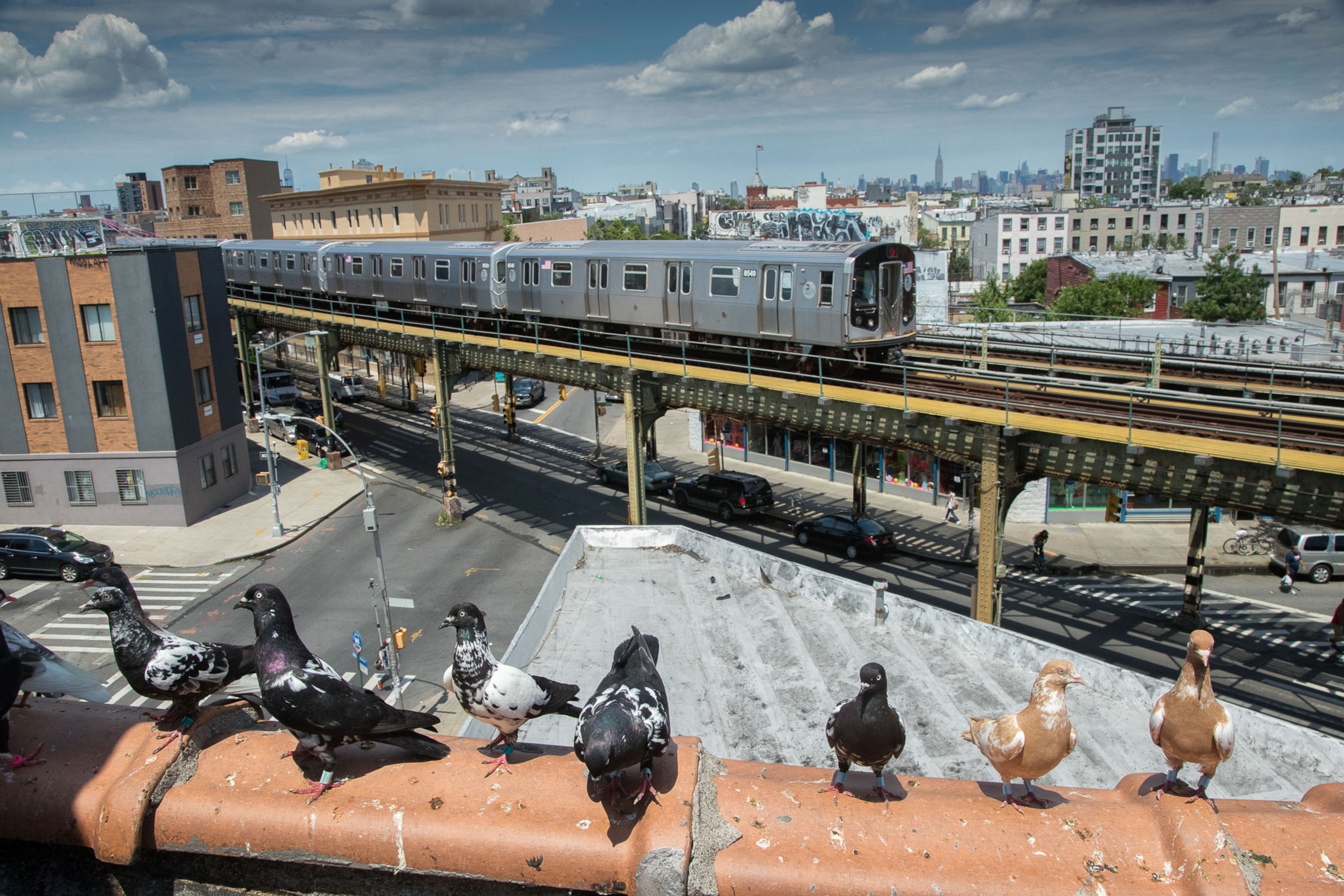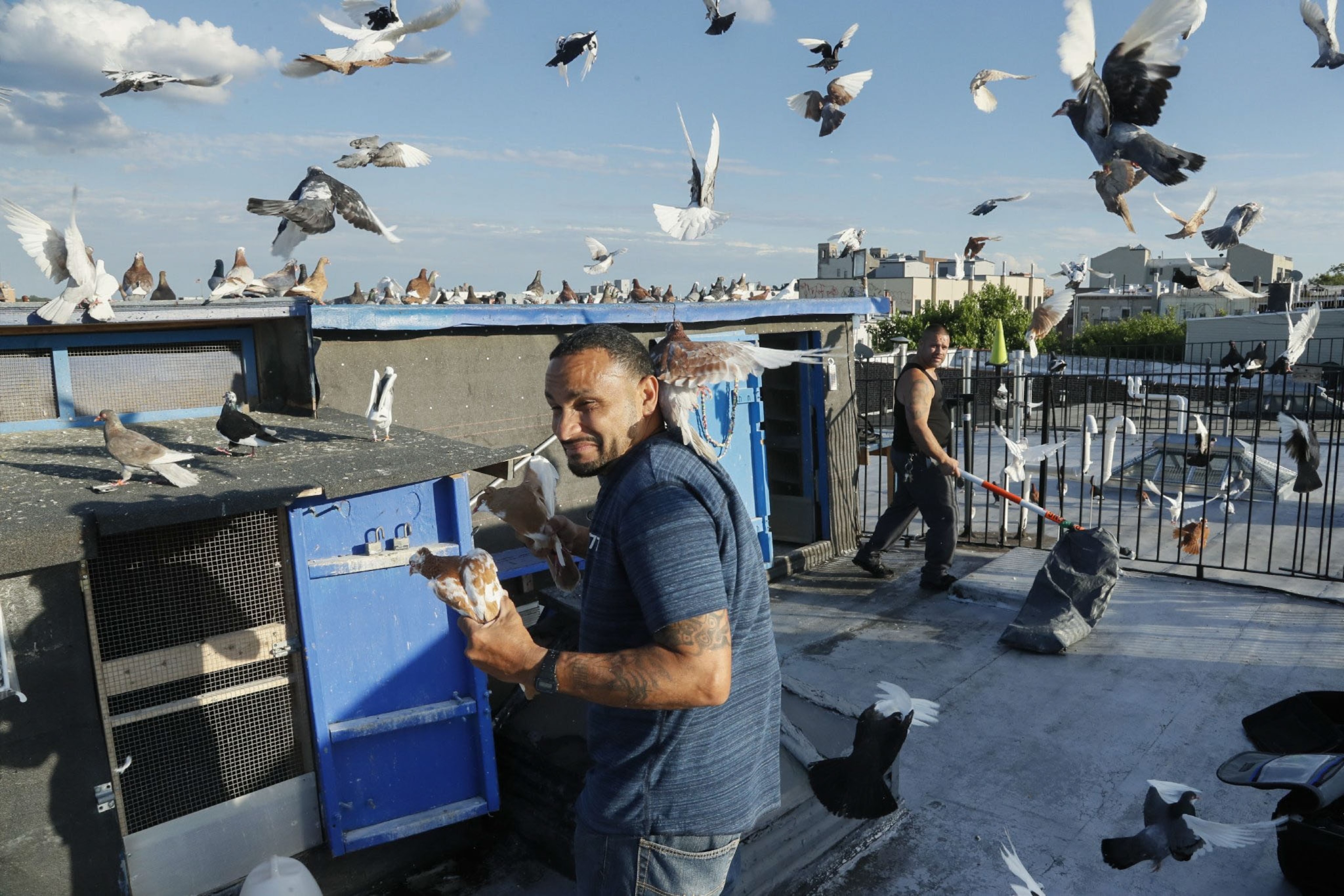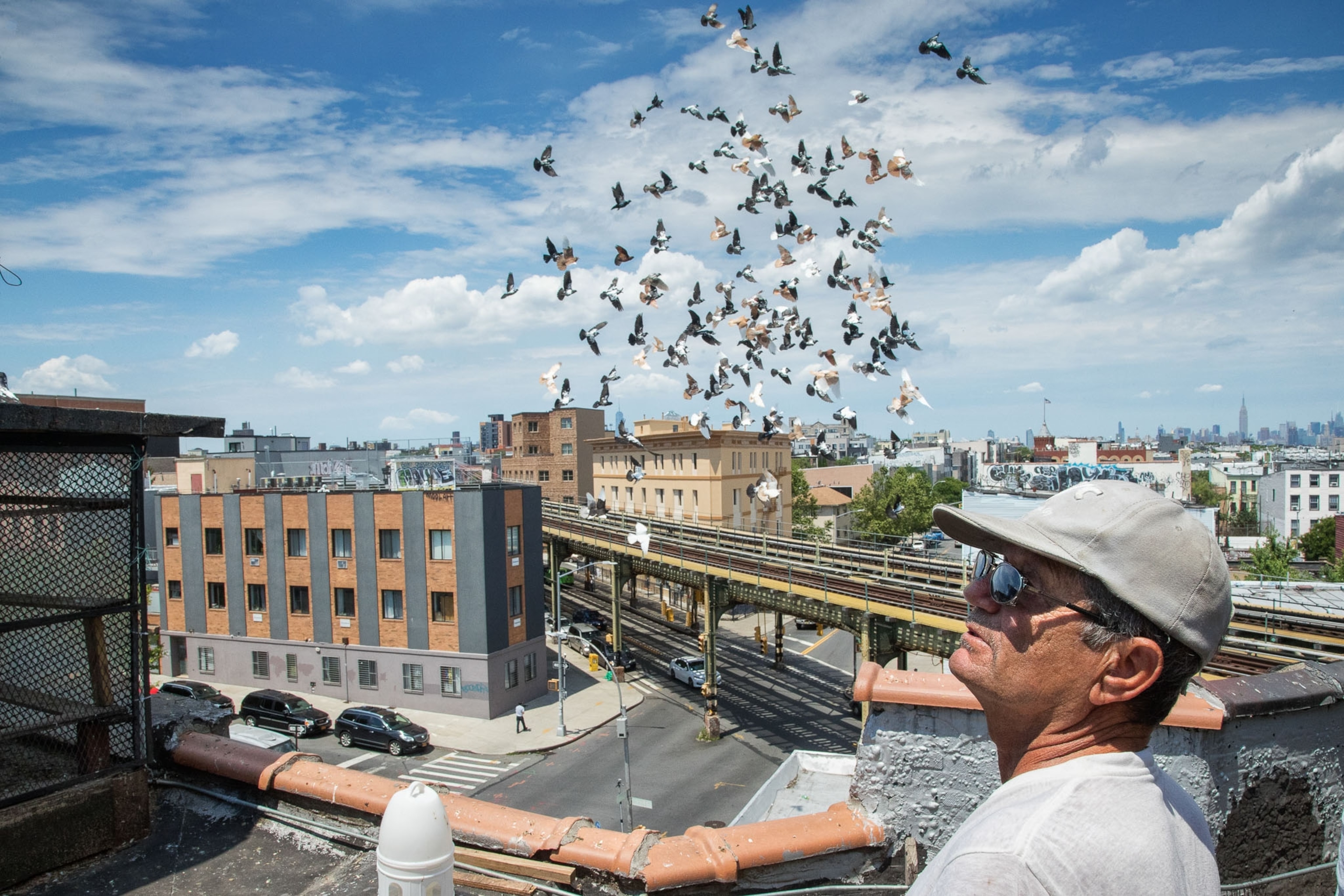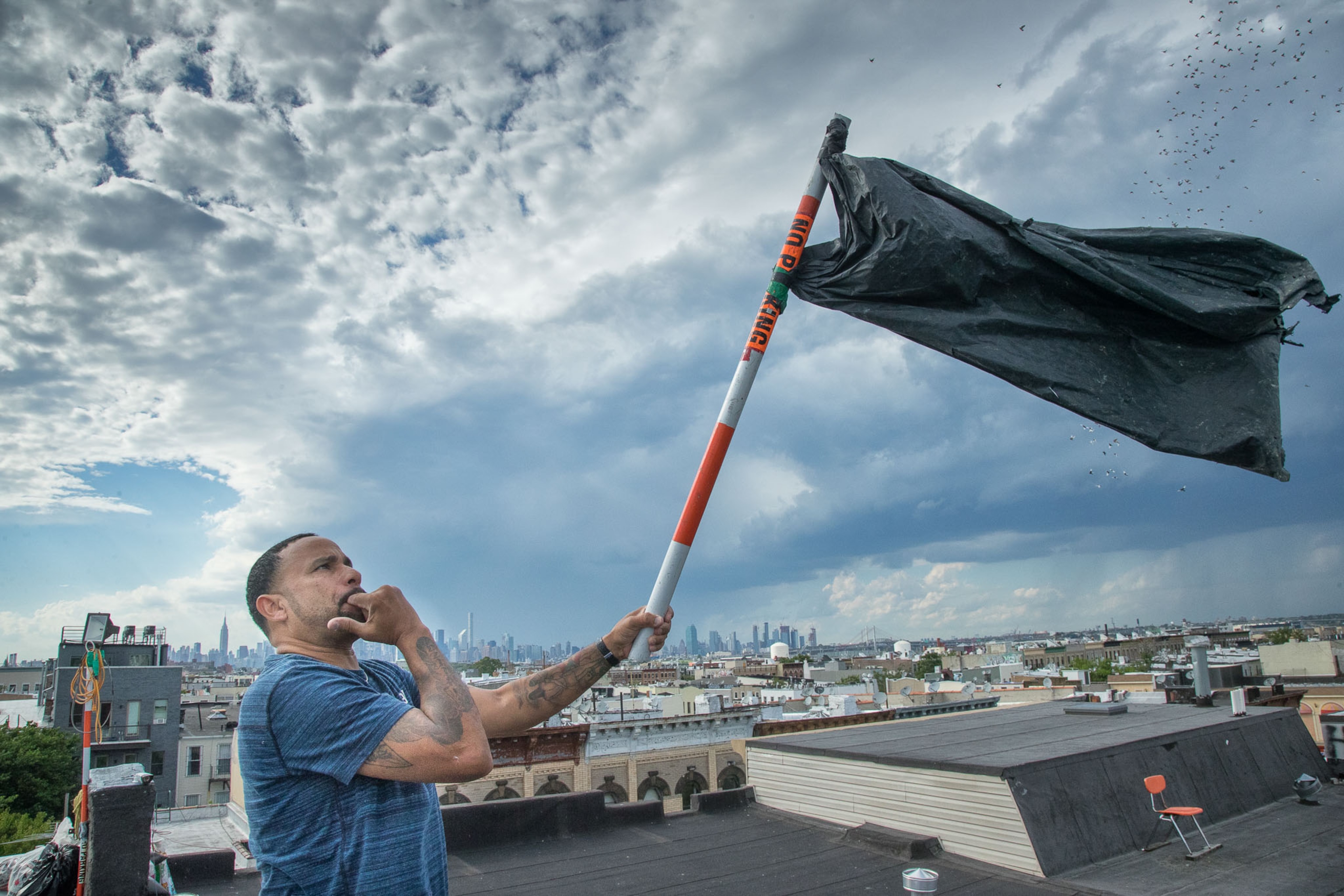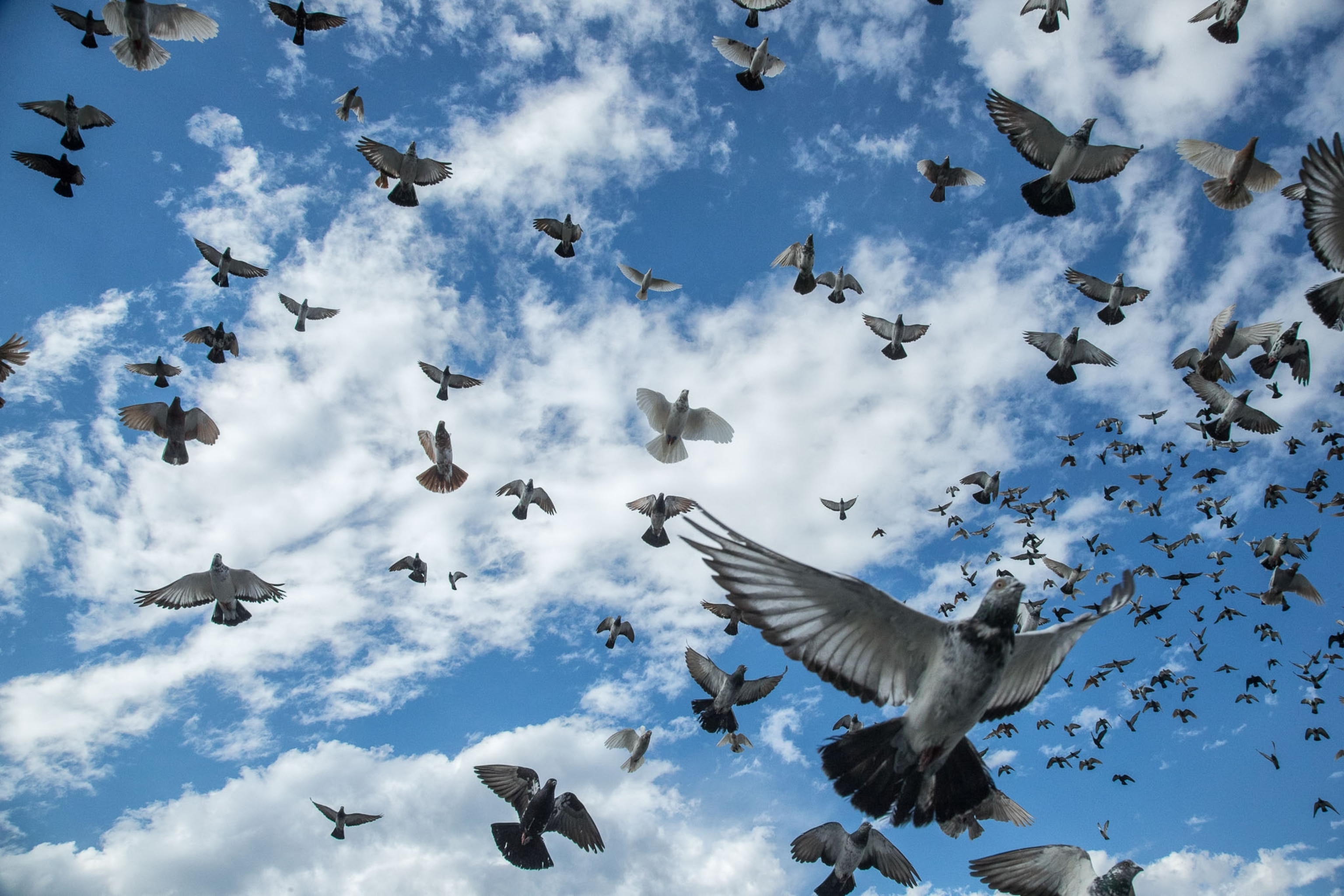For These New Yorkers, Pigeons Aren't a Hobby—They're a Lifestyle
Photographer Charlie Hamilton James takes an inside look at a community of pigeon keepers.
It’s no secret that pigeons get a bad rap, especially among New Yorkers. “Rats of the sky” is not a nickname that connotes a great deal of affection.
But on the rooftops of Brooklyn’s Bushwick neighborhood, photographer Charlie Hamilton James found a close-knit community of “fliers”—people who keep flocks of pigeons by the thousands.
They weren’t easy to find. After their leads dried up, James and assistant photographer George McKenzie, Jr. resorted to approaching people on the street in order to gain access to the complex but cagey subculture. One suspicious stoop-dwelling flier was convinced of their good intentions only after seeing James’s National Geographic business card and verified Instagram. [See James's photos of people and their pet monkeys.]
“They threw us the keys down, so we climbed up this rickety ladder through the skylight,” James said. “It was like walking into another world.”
A Bird’s World
At street level, a pigeon flock in flight can go unnoticed. On the rooftops, though, three thousand birds make a lot of noise—and require a lot of upkeep. Fliers work daily to feed, clean, medicate, and exercise their birds, keeping them in top shape to fly them against rival flocks.
(Neurons in a pigeon’s brain respond to magnetic fields)
“These guys have got incredible eyesight,” James said, referring to the pigeons. “You’re looking out across the Manhattan skyline, and they’ll just see one pigeon flying along and spring into action.”
Waving a long pole topped with a banner, fliers spur their flock to take to the sky, swirling and diving over the neighborhood. It’s a captivating aerial show—and a good way to lure in individual pigeons who’ve strayed from other flocks. [See our editors' favorite pictures of birds around the world.]
It’s a point of pride to have the largest flock, so fliers tag acquired birds’ legs with bands in their own identifying color (or leave the previous owner’s band intact, for bragging rights). But this sport doesn’t run only on ego: pigeon flying is practiced in various forms around the world, and some individual birds can sell for as much as $5,000 in venues such as affinity Facebook groups. [Go inside Scotland's quirky world of competitive pigeon seduction.]
Still, such amounts are hardly enough to offset the thousand dollars a month it takes just to feed a mid-size flock, let alone the additional cost of housing them. And many Brooklyn fliers are watching their rooftops get bought out from underneath them.
High Fliers
Though Brooklyn’s pigeon flying tradition sprang from Italian enclaves, James describes how it has since crossed ethnic boundaries to become important to African American and Hispanic Brooklynites as well. These men—and while there are some female fliers, it is mostly men—learn the ropes from their fathers or grandfathers. [Learn why some pigeons wear elaborate handmade sweaters.]
“What’s hilarious is that everyone does it wrong, according to the person next to them,” said James. “It’s not just between uncle and nephew. If they look across at another loft, it’s: ‘They don’t know how to keep pigeons. None of these guys.’”
But the coops they’ve maintained for generations are being pushed out by gentrification. McKenzie estimates about 60% of Bushwick’s pigeon lofts have been removed in the last decade, the birds sold or given away as buildings are bought up for condominium remodeling. [This is why birds matter, and are worth protecting.]
Some fliers rent their roof space. Alberto (pictured above in a black tank top), bought his building’s roof outright to preserve his coops.
“Most of these guys, it’s what they do every day: get up, wake up the birds, feed them, fly them,” says McKenzie. “For those who are part of that community, it’s something they’re very proud of.”
You can follow Charlie Hamilton James and George McKenzie on Instagram.
